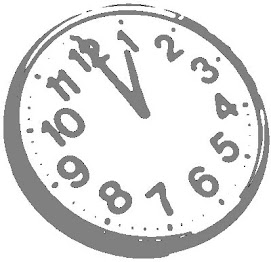[Our series on Dr. Martin Moore-Ede's testimony before Congress continues]
2. Does this loss of vigilance pose a safety threat?
Anticipation, judgment, attention and cognition are all impaired by fatigue. A trained and experienced railroad engineer lapses back to the performance level of a novice when overwhelmed by fatigue, and will fail to anticipate the gradients of a track or the aspect of a signal.
Furthermore, anybody who has ridden through the night or the early-hours of the morning in the cab of a train, as I have, will attest to the battle one must sometimes fight against the waves of sleepiness that impede the safe performance of the often monotonous task of operating a train. These microsleeps in fatigued operators are found in every mode of transportation. In fact my career has given me the opportunity to find myself inadvertently nodding off alongside the operators of every mode of transportation!
We and others have conducted extensive scientific documentation of this phenomenon by wiring up train engineers and conductors with EEG recording devices that measure sleep brain waves. In a study of 500 engineer trips, we found that the average railroad engineer has 4 seconds per hour of operating the train where his eyes are shut in a microsleep (a brief lapse into sleep in the midst of wakeful activity). Among the most sleep deprived engineers, this can reach as high as 100 seconds per hour. It only takes a few seconds of microsleep to miss a stop signal, and indeed examples of this have been captured on tape.
Train collisions where the crew run a train through not only the warning signals but the stop signal and collide with another train, are most commonly the result of such microsleeps. A tell tale sign is that the rate of these accidents peak during the nocturnal and into the morning hours (1AM - 9 AM) at the end of an overnight shift, just the time when we know that human alertness most often fails. The recent (April 23, 2002 ) collision in Riverside, California between a Metrolink passenger train and a BNSF freight train that passed through a red signal at 8:18AM, killing 2 and injuring 265 commuters is just one of the many examples where it would be appropriate to explore the occurrence of a fatigue-induced microsleep event as a potential explanation.
Related Posts:
* Hours of service issues on the railroads: part I
* Hours of service issues on the railroads: part II, sleep deprivation and alertness
* Hours of service issues on the railroads: part IV, increasing risk?
* Hours of service issues on the railroads: part V, hours of service rules
* Hours of service issues on the railroads: part VI, train control technology
* Hours of service issues on the railroads: part VII, alertness monitoring technology
* Hours of service issues on the railroads: part VIII, risk-informed fatigue management
* Hours of service issues on the railroads: part IX, parallel models
* Hours of service issues on the railroads: part X, how to proceed
Feb 21, 2008
Subscribe to:
Post Comments (Atom)









No comments:
Post a Comment